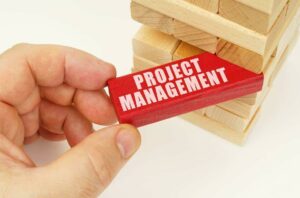
画面クリックで画像が消えます

画面クリックで画像が消えます



Content
Agile Leader Agile Leader Journey Learn more about agile leadership and find out how to take your company to the next level. Ultimately, the question of who attends Backlog Grooming sessions is dependent on the context and information you need. Client services or account managers, for instance, can shed valuable light on the client’s perspective. Depending on the item in question, the client themselves might want to be directly involved in the refinement activity. But if Backlog Refinement doesn’t become embedded, it can soon fall by the wayside.
They can be painful to leave out, and may have an impact on your product, but they don’t affect minimum viability of your product. If there’s any way to deliver without it — a workaround, for example — then it should be downgraded to Should Have or Could Have. Reverse — These make users unhappy when they’re there, happy when they’re not. For example, you might implement high-security features requiring an extra step to login. However, if customers do not value enhanced security, they will become dissatisfied with the extra step. They must be included in your product, and are often taken for granted.
A new size will be assigned if they disagree with the current size of the item. Magic Estimation and Planning Poker are estimation practices based on relative sizing. The process of grouping the remaining cards into the new list is repeated until the last card in the pile. A 20/20 vision of the order of the Product Backlog is created, which shows what is important to stakeholders.
Product Backlog items that can be bought are priced and listed. Scrum Teams involve possible users of Product Backlog items to determine what items are important. Product Owners know that ordering the Product Backlog is not something they should do alone. When Scrum Teams order the Product Backlog collaborative with stakeholders, they gain new insights into what can be valuable to the product.
A backlog contributes massively to the success of an agile project. It’s a living document, which means it changes over time. And there are no strict rules when it comes to refining a backlog. That means, for instance, that not every item requires detail. Back in the old days, someone would basically engrave a requirement specification document in stone before development. As you get used to backlog refinement, you can use the following questions to evaluate your progress.
The steps are done in a sequence and as many times as needed. So, it’s all about the future work expressed as Product Backlog items in the Product Backlog. One way to keep https://globalcloudteam.com/ the backlog lean is to align it with the product roadmap and vision constantly. The alignment will help remove unnecessary features that do not add value to the outcomes.
And, as we mentioned above, you should try to involve more experienced team members rather than more junior people. There are so many ways of refining a backlog that it would be impossible to give you the best one. Other tasks involve correcting estimates in the light of newly discovered information. Furthermore, to estimate all such stories that have not been estimated.
From my experience this should be enough to get started with product Backlog refinement. In the third, and last, blog, I will share some insights in how to facilitate a Product Backlog refinement meeting. — Won’t Have user stories are those in which everyone has agreed not to deliver this time around. You may keep it in the backlog for later, if or when it becomes necessary to do so. In this article, we’ll share a few ideas that will help Scrum teams with refinement and involve Developers in requirements development.
To achieve this, agile teams need to be focused and effective. It provides flexibility and allows teams to choose the frequency of, approach to, and techniques used in Product Backlog Refinement. The Product Owner introduces the topic or product backlog item to be discussed.

The amount of time allocated will depend on the state of the product backlog. In the early days, developers will likely need to dedicate a lot of time for refinement. As the product backlog takes shape, it will have fine grained items towards the top (not more than a 1 or 2 sprints’ worth) and more coarse-grained items towards the middle and bottom. At this point, backlog refinement techniques developers can dedicate less and less time to refinement. The amount of time will never go down to 0 but will likely settle around 10% to 15% to maintain the product backlog in this shape and regularly prep for the next sprint. I find that when teams are struggling with product backlog refinement, it is often because they don’t have the right people in the room.
Therefore Scrum Teams refine only items that move further up the Product Backlog. To avoid refining too much ahead of time, Developers should only spend 10% of their time. In the sprint, the team can focus more on the actual work, because the most important questions were clarified in the refinement. There is a tremendous transfer of knowledge as the PO gives the team more and more context about customers, business model, etc. through the Refinement.

Remember that the Development Team, the Scrum Master, and Product Owner are the Scrum Team. Although the Product Owner can update the backlog themselves, it’s a great practice to involve the team. Now, it’s time to gather your troops and create a shared understanding of your user stories, and prioritize them on value and cost. His focus is on transforming and building high performing innovative organizations and teams that deliver impactful products early and maximize ROI. Faditrains and coachesclients on agility and organizational culture, leadership, product management, user-centered design, agile engineering and DevOps. Fadi is based in Washington DC, co-organizes DC’s largest scrum user group, and frequently presents at conferences nationwide.
“If you are going to quantify one thing, quantify the cost of delay,” says lean thought leader Donald Reinertsen. The Kano Model and the MoSCoW model are similar in that they provide buckets sortable by degree of need. A “must have” in the MoSCoW model is not equal to a “must be” in the Kano model. — Could Have items are those that are wanted or desirable but are less important than a Should Have item. Leaving them out will cause less pain than a Should Have item. — Should Have features are important, but notabsolutely vital to the success of your release.

The whole project team has a part to play in this practice, as everyone has different expertise to bring to the table. The Project Lead and the Delivery Team should be actively involved in refinement. But they are far from the only people who can be involved. You shouldn’t refine backlog items currently under development. You should refine the backlog for the next sprint or subsequent sprints.
Whoever is running the meeting should prepare beforehand by looking through the backlog and choosing which items to look at. Indeed, during refinement you should also check that the items are still actually relevant and that they haven’t morphed into something else in the meantime. In fact, it takes strategic, deliberate thinking to maintain a well-managed backlog, through a process called Backlog Refinement .
Product Backlog refinement meetings can be very efficient when the Product Owner more or less knows the level of detail the Development Team needs. Just using the user story template can be enough for the Development Team to have an item in a ready state. A Product Owner should spend less time on writing acceptance criteria and more time on frequent inspection and adaption when the item is in development. So you see, these were some of the Backlog Refinement techniques or tips that you can apply in the product backlog and make enable the whole agile team to perform well at their end. So, read this topic now and know all about product backlog refinement, its tools, and techniques.
It is better if the Product Owner or requestor or even a business analyst or team member takes some time to document what the request is all about. Backlog refinement is the process of discussing, breaking down, gathering details, and estimating backlog item. The focus is on what is needed and why, rather than on how to solve the business need. Being ‘agile’ means being change responsive and ready. It means that you commit to the regular delivery of increments.
This gives the PO the opportunity to find the answers in time for the Planning Meeting. Product Owner Product Owner Journey Become a product owner and learn how to implement agile product development. To be the best in your industry in 2023, you need robust insights to inform your business decisions, meet customer demand, and drive growth. That means using intelligent technology to optimize processes and deliver more successful engagements. One of the most debated activities when teams apply the Scrum Framework is the point of estimation.
If you don’t go through a process of project or product backlog refinement, you’ll waste time trying to make up for insufficient information. You’ll spend more time in Sprint planning just trying to understand which tasks need to be dealt with first, rather than creating your plan and cracking on with the work. The Definition of Ready represents all the things that a product backlog item must meet in order to be “Ready” to take into the Sprint.
We empower your teams to do their best work with our innovative products. It’s also called story time, pre-planning, and backlog management. It creates a shared understanding within the Scrum Team and the stakeholders around it. It improves the efficiency of the Sprint Planning meeting because most questions are already answered. Product backlog refinement is a key activity in Scrum that is often overlooked. Scrum Teams break down Product Backlog items so that the implementation of each item is immediately usable.